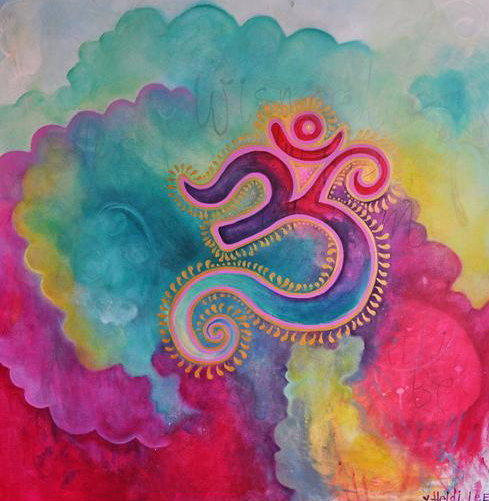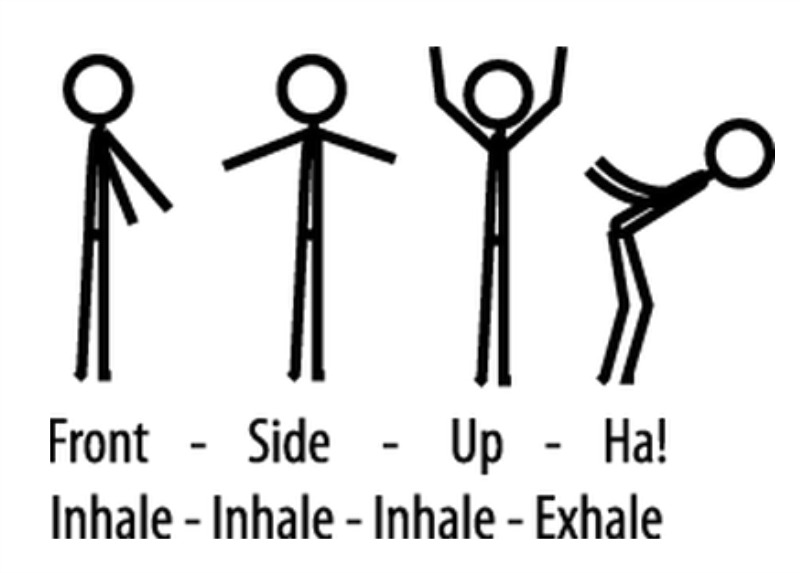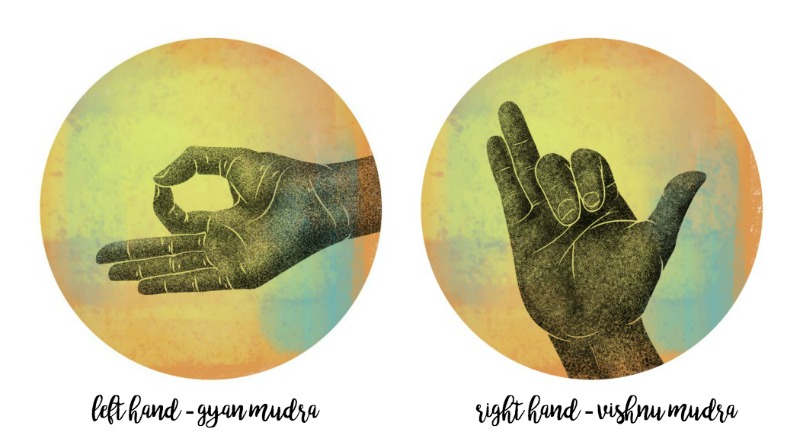Breath is the foundation of any yoga practice. Pranayama refers to breath control techniques in yoga. The breath can be used to stimulate or calm the mind, depending on the technique. These 5 Yoga Breathing Techniques are simple and can be used by anyone for relaxation, joy, to relieve anxiety, or to build heat in the body during asana practice.
5 Yoga Breathing Techniques | Pranayama
Three Part Yoga Breath
Three part yoga breathing, sometimes called deep abdominal breathing, is the foundational breath for any yoga practice. Generally, people breath only into their upper chest, and neglect the expansiveness of the lungs available by practicing deep diaphragmatic breathing. This breath is simple and can be practiced by anyone. It will help calm the mind, slow the breath, and bring focus to a yoga practice. It can be practiced seated, laying down, or standing. It may help to rest one hand on the belly and one hand on the heart to physically observe the expansion and contraction of the lungs. For the first few founds, you may wish to exhale out the mouth, but generally this breath should be in and out through the nose.
- Inhale deeply through the nose, inflating the belly as if expanding a balloon. Exhale through the nose, contracting the belly by pulling navel to spine.
- Inhale, fill the belly and low chest, expanding the ribcage front to back, side to side. Feel the space between the ribs expand. Exhale, the ribcage falls and belly contracts.
- Inhale, fill the belly, ribcage, and upper chest, breathing into the clavicle region, feeling the shoulders rise slightly at the top of your inhalation. Exhale, chest falls, ribcage falls, belly draws to spine.
- Repeat this breath, breathing in belly-ribcage-chest, and if preferred, add a short retention at the top of the inhalation, focusing on the point between the eyebrows, then exhale slowly through the nose.
Victorious Breath | Ujjayi
Ujjayi pranayama, sometimes called “Breath of the Conquerer” or “Victorious Breath,” is most commonly found in vinyasa flow or power flow yoga classes. This technique warms the body and is beneficial for transitioning from pose to pose. Ujjayi involves breathing exclusively through the nose.
- Inhale through the nose, breathing deeply into the bottom of the lungs.
- Cultivate a slight constriction in the back of the throat.
- Exhale slowly through the nose. The exhale will be audible, and sound like wind or an ocean wave crashing on the shore.
- Repeat – generally inhale for expansion, exhale for exertion or contraction.
Square Breathing: 4 – 4 – 4 – 4
Square breathing is a great technique to introduce breath retention (holding the breath), before advancing to more challenging breath retention techniques like those in Breath of Fire (Kapalabhati). This breath technique helps to increase focus, calm the mind, and relieve stress. This is one of my favorites to add at the beginning of a practice to get people into the zone.
- Inhale a count of four.
- Retain the inhaled breath for a count of four.
- Exhale the breath to a count of four.
- Retain the empty lungs for a count of four.
- Repeat for 1-5 minutes.
Breath of Joy
This particular type of breathing is one of my favorites to add to an energizing, powerful vinyasa flow, because it’s an uplifting breathing technique designed to elevate mood. It’s aptly named “Breath of Joy” because it just makes you smile and feel happy! Breath of joy awakens your whole nervous system, increases oxygen levels in the bloodstream, circulating more prana, and gently stoking agni – the internal heat of the body cultivated during breath work and asana practice. It is lovely at the beginning of a practice or midway through, but probably not at the end because it’s a bit too stimulating.
- Inhale one-third of your lung capacity and swing your arms up in front of your body, bringing them parallel to each other at shoulder level, with palms facing the ceiling.
- Continue inhaling to two-thirds capacity and stretch your arms out to the side like wings to shoulder level.
- Inhale to full capacity and swing your arms parallel and over your head, palms facing each other.
- Open your mouth and exhale completely with an audible “HA”, bending your knees, folding halfway forward, moving into standing squat and swinging your arms down and back behind you.
- Repeat 3-9 rounds, then stand upright and feel the joyful vibration.
Alternate Nostril Breathing | Nadi Shodona
Alternate nostril breathing, called nadi shodona in some traditions and anuloma viloma in others, is a breathing technique which calms the mind, relaxes the body, and restores balance between both hemispheres of the brain, the autonomic and somatic nervous system. This technique is also really powerful for assisting with insomnia, quitting smoking, or anxiety.
- Sit in a comfortable seated position with straight spine and closed eyes.
- Bring your left thumb and pointer finger to touch (Gyan mudra) and fold your right pointer finger and middle finger into your palm, so your thumb and ring finger are extended (Vishnu mudra). These two you will use to block the nostrils during this practice.
- Take a deep, full breath to prepare. Inhale deeply through the nose and exhale out the mouth.
- Block the left nostril gently with your right ring finger. Inhale through the right nostril only to a count of 4.
- Pinch the nose closed and retain the breath to a count of 8.
- Keep the right nostril blocked with the thumb and exhale to the left to a count of 8. Inhale through the left nostril to a count of 4.
- Pinch the nose closed and retain the breath to a count of 8.
- Keep the left nostril blocked with your ring finger and exhale right to the count of 8.
- Repeat 10 rounds total (both nostrils inhale and exhale).
- After 10 rounds, release your hand and observe the natural breath. Notice if anything is different in the quality of your breath or your mind.


